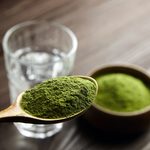Key Ingredients: Cheese
In the November 2008 issue of Reader’s Digest, our culinary experts Bonnie Stern and Fran Berkoff bring you some great recipes and nutritional tips for healthy home cooking based on one key ingredient. November’s key ingredient: cheese!
Everyone loves cheese. But the common definition of cheese, a food made from the curds of milk, does little to describe the vast world of cheese that exists. From imported to local, from fresh to aged, from soft to firm, from rich to low fat, there is a huge variety of cheese to suit every palate.
Cheeses can be enjoyed on their own; or with wine, bread, crackers, fruit, vegetables or nuts; or used in the most delicious and intriguing recipes.
Health Bites
- Cheese is made from the milk of a variety of different animals—cow, goat, sheep and even buffalo.
- It takes about ten pounds of milk to make one pound of cheese.
- Since different cheeses are made in different ways, there is no standard nutritional profile for a piece of cheese. Generally firmer cheeses such as cheddar or Swiss have more nutrients.
- Cheese is a rich source of calcium and also contains vitamins A, B2 (riboflavin) and B12, phosphorous and zinc.
- A 11⁄2 ounce (50 gram) piece of hard cheese has about 12 grams of high-quality protein. Some studies have demonstrated the satiety value of protein, meaning that it can make you feel fuller after eating.
- The milk you drink is fortified with vitamin D, but the milk used in the production of other dairy products is not required to be fortified with D. So, cheese is not a source of this important vitamin.
- Canada’s Food Guide recommends 2 to 3 servings of milk or alternatives for adult men and women. A food guide serving of cheese is 50 grams, or 11⁄2 ounces.
- Fat gives cheese much of its delicious taste and texture, but it also contributes calories. Fortunately, these days there is a wider variety of delicious low-fat cheeses. The tasty Cantenaar cheese contains about 17 percent fat, and La Dame du Lac (an Quebec artisan cheeserings in at about 10 percent.
- If you’re not satisfied with low-fat cheese but need to cut back on calories try these suggestions:
- Use very flavourful or aged cheeses but half the amount.
- Keep trying new low-fat cheeses to find ones you like.
- Combine naturally low-fat cheese with a high-fat cheese to bring down the fat context.
- Use ricotta, feta, goat, mozzarella, yogourt cheese and quark, as they are naturally lower in fat and have great taste and good texture.

Bonnie Stern has been teaching people to have fun in the kitchen, to eat more healthfully and to nourish their families since she started her cooking school in 1973.

Fran Berkoff is a consulting dietitian/nutritionist in Toronto, as well as a columnist for newspapers and magazines, and co-author or several books.



